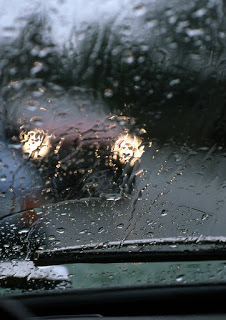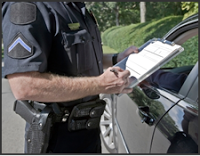Tag Archive: safe driving

Teens New Year Resolutions to be a Safer Driver
December 29, 2010
When ringing in the New Year, millions of people decide to make what has become to be known as New Year’s resolutions. Many people will make a commitment to losing weight, to quit smoking cigarettes, do better in school, get out of debt, or join a fitness club. The sad part of making these resolutions is they are often very hard to keep and people often fail within the first few weeks or months of trying.
There is one New Year’s Resolution that can be achieved by teens and that is becoming a safer driver. It’s easy to achieve because licensed teenage drivers are in their vehicles every day giving them the opportunity to stick to their resolution.
In today’s world of driving, drivers are multitasking when behind the wheel. According to the Safe Driving Institute:
- 77% of drivers admit to talking or texting while driving
- 60% admit to eating while driving
- 50% admit to making obscene or rude gestures or comments to other drivers, particularly those who cut in front of them
- 50% admit to almost falling asleep while behind the wheel
- And there are countless teens getting behind the wheel of their vehicle drunk, high or buzzed.
Making a New Year’s resolution to eliminate the above while driving isn’t difficult to incorporate into your daily driving habits. Let’s look at a few:
- Ditch the cell phone because using a cell phone or texting while driving can be as dangerous or deadly as drunk driving. One way of doing this is to keep your cell phone far enough away that you will not be tempted to use it. Keep it turned off and let all messages go to voicemail to be listened to later. You can also purchase a cell phone blocker to block calls and/or texts while the vehicle is in motion, Only use a cell phone when driving for emergencies.
- Drive within the posted speed limit. When you speed you are increasing the chances of you getting into a crash, injuring or killing yourself or others. Don’t be a follower and speed alongside everyone else. Be a leader and show others you obey the law.
- Fast food is often a teens lifeline but not while you are driving. If you need a snack, go through the drive-through, get your food, park, eat and then continue your journey.
- Always look when entering a lane of traffic or passing another car. Get into the habit of using your turn signals and side-view mirrors and don’t forget those inexpensive “blind-spot mirrors“ can make the difference of getting into a crash or not.
- When someone cuts you off, take a deep breath, count to ten and let it go. Road rage accomplishes nothing except putting you in danger of a crash while you try to catch up to the other driver.
- Wear your seatbelt. Not because it’s the law, but because it will save your life.
- Study for your school tests at home, not while driving to school. Reading while driving is the second most common distraction while driving after the cell phone.
- Always remember drinking, drugging and driving don’t mix. One beer or a hit from one blunt can negatively impact your driving skills. If you plan on partying with alcohol or other substances, make sure you use a designated driver. Also remember that in all 50 states in the United States the legal age to consume alcohol is 21 and using illegal drugs such as marijuana is illegal.
- Finally, take a defensive driving course every couple of years. It’s always good to have a little refresher course and find out what changes have been made in the traffic laws and road conditions.
Remember, driving is a privilege and with a privilege comes responsibility and accountability. So make sure your New Year’s resolutions include becoming a smarter and safer driver. It’s an easy one to incorporate into your daily living and will help you survive on the road.
Happy New Year and Safe Driving!

Distracted Driving Campaigns
July 9, 2010
Buzz, buzz…it will just take a second to check. Ring, ring…it could be important. Yeah, I should go ahead and make that call. It will save me the time and hassle later on. The temptation to reach out and/or respond to some one through a cell phone is great. You have heard the news stories and safe driving campaigns and you know that you shouldn’t, but…do you resist the urge to use the cell phone or let temptation get the best of you?
In order to completely eliminate the urge to use your phone you could turn it off before turning your key in the ignition, lock it up (in the glove box, console, or trunk), or install some of the new technology for cell phones. There are several companies offering services that will restrict the phone’s ability to send and receive text and email messages. Some companies offer services that will restrict calls too. A sampling include:
Textecution – http://www.textecution.com
Textecution is an application designed for parents to install on their children’s phones. It utilizes the GPS features of several handsets to determine if the owner of the phone is moving at more than 10mph. It disables the texting function of the phone. If the person with Textecution on their phone is riding a vehicle as a passenger, or in a bus or train need to use the text feature, there is an “override” option — requesting for text access from the administrator. The parent who installed the phone is designated as the administrator, and can allow, temporarily for the phone to allow texting features. www.safefloridadriver.com
iZUP – http://www.getizup.com/
iZUP disables your phone entirely, removing any distraction from the road. It automatically forwards calls to voicemail and holds text messages while the phone is in motion. It is also time-delayed, to prevent reactivation of the phone’s features in natural stopping areas, like stop lights. The phone will only allow the user to make calls to 911 and 3 pre-approved numbers.
TXTBlocker – http://www.txtblocker.com/
TXTBlocker utilizes GPS locations to detect if the phone is traveling at a car’s moving rate and disables features of the phone accordingly. The installer of the TXTBlocker phone can also designate which areas are no-phone zones, and deactivates texting, calling, email and browsing. There’s also a feature that auto sends a text message to the parent, should the phone be moving at speeds greater than 65mph. Another safety feature for parents is they could check where the owner of the phone is in, based on GPS location. The phone will still be able to dial 911, in case of emergency. It only checks in with GPS every few minutes, so it doesn’t constantly use the phone’s battery.
DriveSafe.ly – http://www.drivesafe.ly/
DriveSafe.ly is a hands-free application that reads out text messages and emails as the phone receives it. There is an optional auto-responder that sends out a customized text message while the application is active.
Committing to be distraction free when you are driving is not easy. But the statistics remind us each day that we are more likely to have a collision when we are distracted, many drivers are making an effort. Regardless of whether it is hand held or hands free, the cell phone is a distraction for every driver.
Learn more about the Measures Taken to Stop Distracted Driving.

Tips for Drivers when it comes to driving in the Rain and Sleet
January 7, 2010
Whether you’re a new driver or a veteran, the roads we drive on can hold a range of different secrets that even the most experienced of us fail to spot. Driving in rain and sleet can sometimes be a very daunting experience, and we each handle it in many different ways, some of us embrace the challenge, whereas others clam up and find themselves driving to the office at a snails pace in fear. But there are a few things you can do in order to ensure that you are driving safely and sensible, without causing traffic or accidents!
The main way to drive safely in the winter months is to understand the different road conditions and the impact they each have on your car and driving. Whether it’s raining, hailing or heavily snowing, the conditions on the road will be greatly affected as opposed to dry weather. Traction for braking and accelerating is severely reduced, sometimes up to 1/8th of their usual capacity, often making breaking time longer when it comes to stopping. Visibility can often be a key factor, as snow and heavy rain can decrease what you can see.
One aspect that few people realize is that heavy rains can cause windows to fog up fast, so the best way to conquer this is to de-fog as soon as u get in the car, leave the heat on but on a low fan setting, and open your window ever so slightly to keep fresh air flowing, this help keep your windows from fogging when your driving in particularly rainy, or even snowy weather. Always keep an eye on your windows, if they begin to fog then de-fog immediately to ensure optimum visibility when driving in these conditions.
Another is speed; it may sound obvious but slow down when you’re driving in bad weather. Because roads that are wet and snowy require good vehicle control, reducing your speed where you feel comfortable can give you the best control over your vehicle; you don’t have to dip drastically under the suggested speed limit, just drop just below and you’ll find that should suffice. You won’t be the only one either, the limits you will find on the roads are based on ideal weather, so dropped just below will mean it should suit the road perfectly.
This is also a warning for those of you who drive at high speeds regardless of the weather. It is ill-advised that you tail-gate in bad weather, especially if a driver is doing just under the speed limit, doing this is not only intimidating, but it’s also very dangerous in wet and sludgy weather. If the driver in front were to slow down or stop suddenly, there is no guarantee you will be able to stop in time on roads that have reduced traction, so always drop back, be patient and be safe.
When driving, accelerate gradually, brake gradually, and turn slowly and carefully. Sudden actions on wet or slush filled roads can cause a sudden loss of traction that can cause you to loose complete control of your vehicle and cause an accident. Sharp bends demand caution on dry roads, they demand even more caution in bad conditions, so always be gentle and careful when driving. A great tip is to try and keep your foot off the accelerator where possible when driving on overpasses or under bridges. These types of roads can often hide shady spots of ice or sleet, which can cause you to spin out if you accelerate over it too quickly without thinking.
Try to avoid using cruise control in bad weather, especially snowy, icy or rainy conditions, in order to ensure your safety, you need to resist the temptation and manually control your car, in order to ensure that you always have control over your vehicle and the acceleration.
Also, do your best to look out for other drivers by clearing all the snow off your car, when you’re driving along, snow could be blown off your car and straight smack into the car behind you, this has often caused people to loose visibility, and the shock of the sound can often cause people to loose control in fear. Similarly, if you come across someone in front of you with snow on their car, try and stay back, you wouldn’t believe how fast snow hurtles towards you, it can be a lot scarier than you think, as silly as it sounds, so always look out for your fellow drivers, and yourself.
Always be careful when driving in the rain and sleet, never forget your headlights, and always remember to brake earlier to give yourself time to come to a stop. By following these tips, you’ll be driving in bad weather safely and securely for years to come.
Driver Education: How Drugs Affect Driving – Illegal Prescription Drugs
July 8, 2009
In 2007, 4.4 million teens reported that they had abused a prescription drug at some point in their lives, according to the Partnership Attitude Tracking Study (PATS). Abuse of prescription drugs by teens is on the rise, and parents need to be vigilant to keep their teens from using. Many teens who illegally use prescription drugs get them from their own homes, though they can also obtain them from friends and the internet.
Many teens use prescription drugs to get high, but they may also use them to relieve anxiety and stress, sleep better, improve concentration and increase alertness. Even teens who stay away from street drugs are vulnerable; a “good kid” might take amphetamines so she can study longer and keep her grades up. According to the Office of National Drug Control Policy, adolescents are more likely than young adults to become dependent on prescription medicines.
But the risks of using prescription medications are not well understood by many teens, according to PATS; about four in ten teens surveyed perceived prescription drugs used without a prescription to be safer than street drugs. The Office of National Drug Control Policy says that when teens abuse prescription drugs, they often characterize their use of the drugs as “responsible,” “controlled” or “safe.”
Illegal use of prescription drugs is far from safe, however, particularly if a teen takes prescription drugs and drives. The most commonly abused prescription drugs are painkillers, tranquilizers, sedatives, and stimulants. All of these drugs act on systems in the brain that control driving behavior and impact motor skills and thus can lead to impaired driving ability. Teens often abuse prescription drugs at “pharm parties;” each teen brings prescription drugs from home, the drugs are combined in a big bowl (called “trail mix”), and each teen consumes a handful; after the party, teens whose judgment is impaired often get rides home from other impaired teens.
In addition to the physical danger to their own children, parents whose teens use illegal prescription drugs and drive incur huge financial risk. Though the level of liability varies by state, parents can be held liable for the negligent acts of minor drivers. If a motor vehicle crash that results in injury or death occurs and a court finds that a parent should have known, or knew, that their teen was using illegal drugs or drinking alcohol while driving, the financial consequences of a lawsuit could be devastating.
Ensuring that teens don’t take advantage of prescription drugs in your household requires a high level of alertness. Consider storing prescription drugs in a small lockbox, keeping a count of prescription drugs, checking your teen’s room and recreational areas regularly for pill bottles, and checking the computer’s internet history to make sure teens aren’t shopping for drugs online.
Talking to teens about illegal prescription drug use is important too. Several studies indicate that teens are much less likely to use alcohol or any other drug when parents have consistently expressed their feelings on the issue.

Project Note Home in Wyoming Should Keep Teens on the Straight and Narrow
June 7, 2007
The state of Wyoming has implemented a great new plan called “Project Note Home.” It seems that new teenage drivers tend to not share the fact that they receive traffic tickets with their parents. Shocking, isn’t it? In fact, parents are pretty much clueless until the next insurance bill comes along. However, with “Project Note Home,” any traffic infraction gets communicated to the parents.
Keeping parents in the loop about their teen’s driving record is a smart move for the state. Too often, teens have found out ways to pay for their tickets without their parents finding out about it. These teens are not being held accountable for their actions. What are a few bucks in fines compared to having their driving privileges suspended? Well, with this new program, copies of the traffic violation are being sent home to the parents. Teenagers will now have no way to hide their driving violations.
No longer will parents be shocked to find their teen’s auto insurance bill going up several hundred dollars. Now, they will know exactly why – their teenagers are not practicing safe driving practices. You can bet that a lot more teenagers will experience suspended driving privileges as a result of “Project Note Home.”
There is a side benefit to this new program as well. It could very well save the lives of many teenager drivers. It’s a proven fact that the biggest death toll in car accidents every year fall within the fifteen to twenty year old range. Teenagers are inexperienced. They have not come across every driving situation experience yet. With that inexperience come potential problems.
By being held accountable for every infraction while behind the wheel of a car, teenagers will soon learn to shape up their habits. Speeding is one of the biggest violations on the road along with not wearing a seat belt. Both of these infractions can kill. By alerting parents to the fact that their teenagers are not engaging in safe driving behaviors, this will open a dialogue between the parent and the teen. They will be forced to talk about the situation and perhaps, a lesson or two will be learned.
